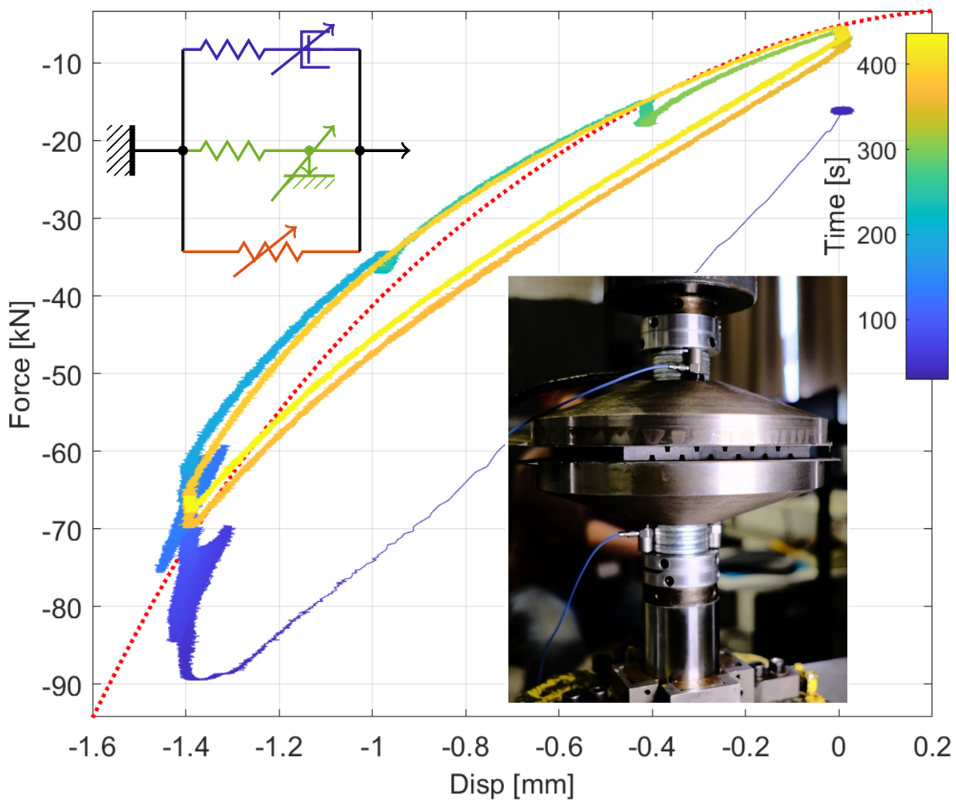How to design vibration tests exhibiting viscoelasticity, hyperelasticity and rate-independent hysteresis behavior of rail pads ?
Etienne Balmes will present
“Non-linear viscoelastic damping: designing tests needed for transient simulation of a rail track”
at the ISMA 2024 conference (International Conference on Noise and Vibration Engineering) hosted by KULeuven

🎙️ The talk to be given will detail
👉 Rubber material three fundamental types of behavior: viscoelasticity, hyperelasticity and rate-independent hysteresis
👉 Test profiles involving fast steps, frequency/amplitude sweeps, constant velocity ramps…
👉 Estimation strategy of hyperelastic stiffness, hysteretic relaxation stiffness and viscoelastic complex modulus from measurements
👉 Transient simulation of a model involving rail/wheel contact and non-linear viscoelastic behavior of the pads
See you there on Tuesday, September 10 at 11:25 in the Damping session! 😉
📝 Summary:
“Viscoelastic materials are widely used in many industries for their ability to undergo large deformation and dissipate energy. Pads placed between rail and sleeper experience large deformation when the train passes. This is important for load distribution to the sleepers. They also strongly contribute to vibration damping, and thus to lowering noise emissions associated with rail/wheel contact. There is thus a need to have a model that allows transient simulation in a regime accounting for dependence of the behavior on time history including multiple time scales. The study revisits the design and exploitation of test sequences combining steps, ramps, stepped sine and sweeps in frequency and amplitude. Illustrations are given for full scale tests of rail-sleeper pads.”
✍️ Authors: Etienne Balmes, Guillaume Martin and Olivier VO VAN
🤝 This study is the result of a collaboration with Groupe SNCF
